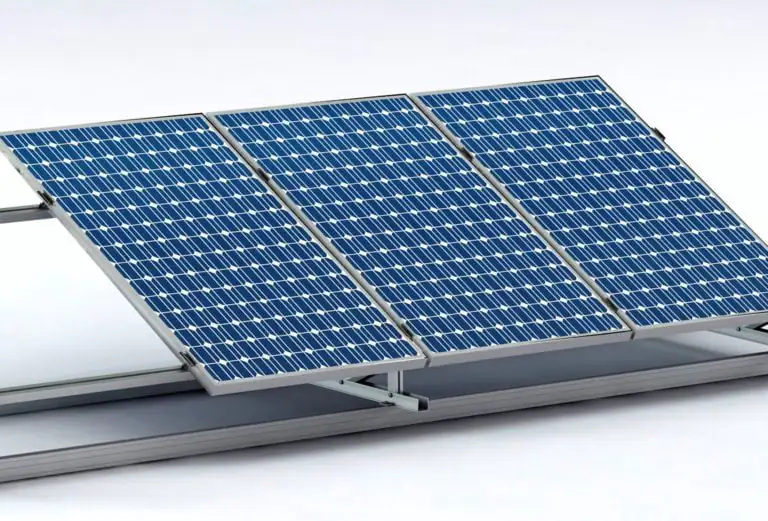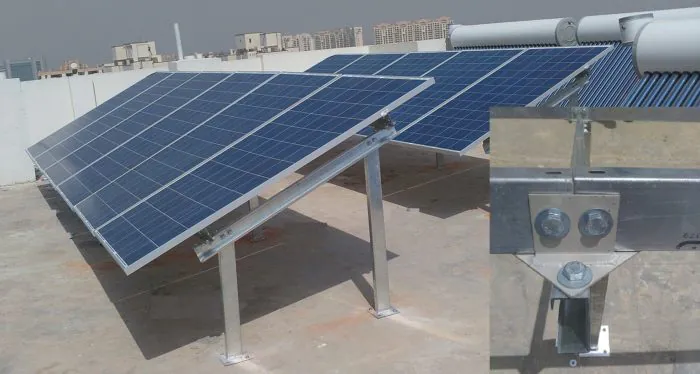Solar Power with Cutting-Edge Panel Mounting Structures
Solar panels, commonly known as photovoltaic (PV) modules, are the fundamental components of solar power systems. They are made up of numerous components that have been meticulously developed to catch sunlight and turn it into electricity. Understanding the construction of solar panels might help you better understand its operation and performance. We will look at the components and design of solar panels in this part.

Solar Panel Design
Solar panels are designed to optimize sunlight absorption and electricity generation. Here are some key design features:
-
Solar Cell Configuration: Solar cells within a panel can be connected in different configurations, such as series or parallel, to achieve the desired voltage and current output. The design takes into account factors such as shading, efficiency, and the electrical requirements of the specific application.
-
Anti-Reflective Coating: Solar panels often feature an anti-reflective coating on the front surface. This coating minimizes the reflection of sunlight, allowing the solar cells to capture a higher percentage of incoming light and improve overall efficiency.
-
Busbars and Ribbons: Busbars and ribbons are conductive strips that interconnect solar cells within a panel. They ensure the efficient flow of electricity generated by individual cells, reducing electrical losses and optimizing the panel's performance.
-
Cell Arrangement: Solar cells can be arranged in different patterns within a panel, such as a grid-like matrix or interdigitated design. The arrangement maximizes the use of available space, improves light absorption, and enhances electricity generation.
-
Bypass Diodes: Some solar panels feature bypass diodes connected across individual solar cells or cell groups. These diodes help mitigate the impact of shading or the malfunctioning of individual cells, ensuring optimal energy production in partially shaded conditions.
Rooftop Mounting Structure Price List

|
Solar System Capacity |
Selling Price |
Price/ Watt |
| Rs.5,000 |
Rs.5 |
|
| Rs.10,000 |
Rs.5 |
|
| Rs.15,000 |
Rs.5 |
|
|
4kW Solar System |
Rs.20,000 |
Rs.5 |
| Rs.25,000 |
Rs.5 |
|
|
6kW Solar System |
Rs.27,000 |
Rs.4.5 |
|
8kW Solar System |
Rs.36,000 |
Rs.4.5 |
| Rs.45,000 |
Rs.4.5 |
|
| Rs.60,000 |
Rs.4 |
|
| Rs.80,000 |
Rs.4 |
|
| Rs.1,00,000 |
Rs.4 |
|
| Rs.1,20,000 |
Rs.4 |
|
| Rs.1,75,000 |
Rs.3.5 |
|
|
100kW Solar System |
Rs.3,50,000 |
Rs.3.5 |
Components of a Solar Panel
-
Solar Cells: Solar cells are the fundamental units of solar panels. These cells are made of semiconductor materials, such as silicon, that have the ability to convert sunlight directly into electricity through the photovoltaic effect. Multiple solar cells are interconnected within a solar panel to generate usable amounts of electricity.
-
Encapsulation: Solar cells are encapsulated within a protective layer to ensure durability and long-term performance. This layer is typically made of a clear, anti-reflective material, such as tempered glass or specialized polymers. Encapsulation protects the cells from external elements and provides structural support.
-
Backsheet: The backsheet is a crucial component of a solar panel, located on the rear side. It acts as a barrier against moisture and mechanical damage. Backsheets are usually made of materials that offer excellent electrical insulation, such as specialized polymers or aluminum composites.
-
Frame: Solar panels have a frame that provides structural support and protection for the internal components. The frame is typically made of aluminum or steel and is designed to withstand various weather conditions and mechanical stresses. It also facilitates easy installation and mounting of the solar panel.
-
Junction Box: The junction box is located on the back of the solar panel and houses electrical connections. It serves as the interface between the solar panel and external wiring, allowing for the safe and efficient transfer of electricity. The junction box often includes diodes that prevent reverse current flow and optimize the panel's performance.
